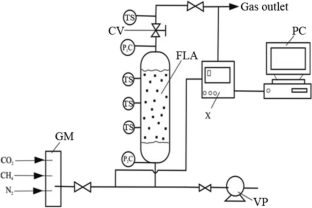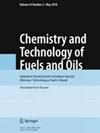分离气体混合物的吸附器优化设计
IF 0.7
4区 工程技术
Q4 ENERGY & FUELS
引用次数: 0
摘要
该研究致力于通过吸附法研究和优化设计气体混合物(CO2/CH4 和 CO2/N2)的分离。合成沸石 NaX 被用作吸附剂。使用二元模型混合气体:按体积计算,CO250%、CH450% 和 N250%、CH450%。确定了扩散系数。实验在 295 K 的温度下进行。本文章由计算机程序翻译,如有差异,请以英文原文为准。

Optimal Design of Adsorbers for Separation of Gas Mixtures
The work is devoted to the study and optimal design of the separation of gas mixtures (CO2/CH4 and CO2/N2) by the adsorption method. Synthetic zeolites NaX were used as adsorbents. Binary model mixtures of the gases were used: CO250%, CH450%, and N250%, CH450% by volume. The diffusion coefficients were determined. The experiments were carried out at a temperature of 295 K. A complete mathematical model of the adsorption process was developed.
求助全文
通过发布文献求助,成功后即可免费获取论文全文。
去求助
来源期刊

Chemistry and Technology of Fuels and Oils
工程技术-工程:化工
CiteScore
0.90
自引率
16.70%
发文量
119
审稿时长
1.0 months
期刊介绍:
Chemistry and Technology of Fuels and Oils publishes reports on improvements in the processing of petroleum and natural gas and cracking and refining techniques for the production of high-quality fuels, oils, greases, specialty fluids, additives and synthetics. The journal includes timely articles on the demulsification, desalting, and desulfurizing of crude oil; new flow plans for refineries; platforming, isomerization, catalytic reforming, and alkylation processes for obtaining aromatic hydrocarbons and high-octane gasoline; methods of producing ethylene, acetylene, benzene, acids, alcohols, esters, and other compounds from petroleum, as well as hydrogen from natural gas and liquid products.
 求助内容:
求助内容: 应助结果提醒方式:
应助结果提醒方式:


